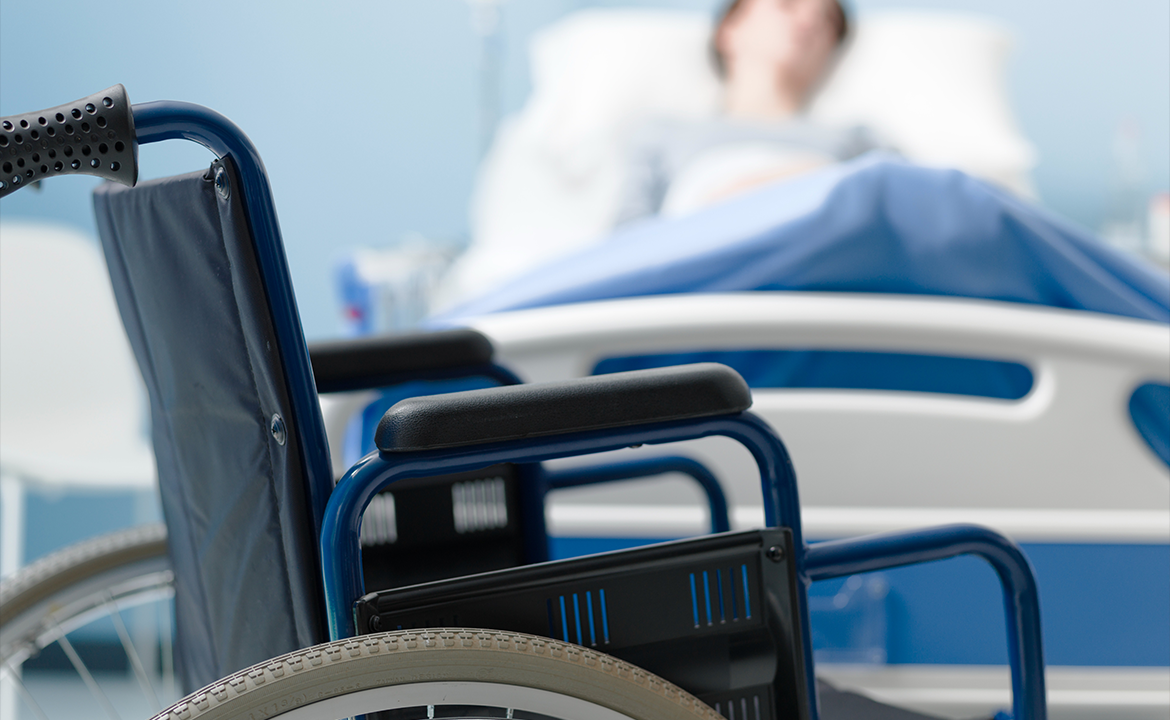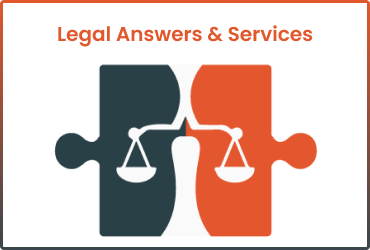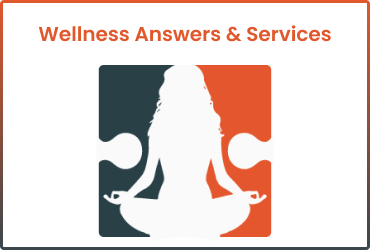The law provides that you are entitled to recover damages from the person, persons, or entities whose wrongful conduct, whether negligent or intentional, caused you to experience physical injury, financial loss, and pain and suffering.
In the case of an automobile accident, the injured party (plaintiff) can recover monetary damages from the defendant driver or drivers who caused the accident through the court system.
For most personal injury claims, the law provides the injured party the legal right to seek compensation from the responsible party.
Three Types of Damages in Personal Injury Cases
- Economic damages
- General damages
- Punitive damages
Economic damages include property damage, the cost of past and future medical and hospital bills, past and future loss of earnings, property, and all economic loss that can be reasonably calculated due to the defendant’s wrongful conduct.
General damages in personal injury cases focus on the types and severity of pain and suffering a person experiences resulting from physical trauma or loss and legally caused by another.
The amount of compensation received depends on the severity and length of the plaintiff’s suffering.
Punitive damages are assessed when the defendant’s actions were intentional and despicable. It is a very high burden of proof the plaintiff must meet. Consequently, punitive damage awards are rarely upheld on appeal.
The imposition of punitive damages is public policy-driven. It is meant to punish and dissuade others from engaging in similar types of conduct.
Each of the three types of personal injury damages is examined separately below:
Economic Damages
Medical Bills
The issue of who pays the medical bills in a motor vehicle accident is determined by the type of insurance involved and the state where the accident occurred.
In most states, including California, should the defendant be found legally at fault for the accident, they are responsible for all damages the plaintiff suffered.
No-Fault System
Generally speaking, in states with no-fault insurance, a car owner who has been injured in an accident collects up to a certain amount for their personal injury damages from their insurance company, regardless of who caused the accident. However, some states may still factor in some degree of fault, even under a general no-fault system.
Under these partial no-fault systems, the insurance company of the responsible party – either you or the other driver – is obligated to pay the medical bills of the party who was not at fault but might not be obligated to pay for that person’s pain and suffering, loss of income or loss of consortium. Many states have unique rules regarding their no-fault laws.
Med-Pay Coverage
Pays For Medical Bills Regardless of Fault
Depending on your state’s insurance laws, your car insurance may contain a provision for payment of your medical expenses and those of your injured passenger resulting from the accident. This is called Med-Pay insurance and is purchased by the insured for an additional premium.

Med-Pay Limits
Med Pay coverage limits are usually in increments of $5,000 through $25,000. It is not intended to be your primary health care insurance. It is intended to provide the insured driver and his passenger(s) with immediate access to payment of medical bills arising out of the personal injury accident.
Med-Pay is not there as a replacement for medical insurance coverage.
Med-Pay is strictly limited to injuries directly resulting from a motor vehicle accident and almost always has a maximum limit of around $25,000.
Bad Faith Denial Of Med-Pay Benefits
Since Med-Pay is a policy benefit the insured pays for, the insurance company must act in good faith and fair dealing concerning payment of the benefits owed to their insured.
This can arise when the insurance company unfairly contends the injury for which Med-Pay coverage applies was not the result of the subject accident but was pre-existing or unrelated.
PIP Coverage (Personal Injury Protection)
PIP coverage extends your car insurance, covering medical expenses and lost wages. It is not offered in every state. PIP coverage is usually part of a state’s “No-Fault” insurance system rather than comparative fault insurance systems, which other states follow.
Home Nursing
Home health care offers various services depending on your medical condition. Home health care can be as expensive as being in a skilled nursing facility (SNF).
The Goal Of Home Health Care
Home health care is when an injured person is treated for their injuries at their home. Depending on the type of injuries suffered, the primary goal is supporting and improving a person’s health to gain more independence and self-sufficiency.
If you receive benefits through a Medicare or a Medicaid health plan, check its schedule of services to determine whether the plan covers home health care.

Skilled Home Health Care Services Include:
- Monitoring serious illness and unstable health conditions
- Monitoring your food and liquid intake
- Monitoring your blood pressure, temperature, and heart rate
- Making sure that you are taking your medication as prescribed
- Check for dangerous safety hazards in your home
- Instruct you on self-care
Coordinate Medical and Therapist Visits To The Home
- Be in regular communication with your doctors
- Making sure you do not develop pressure sores and are familiar with knowing how to stage bedsores
- If needed, set up and monitor intravenous therapy and administer injections
Property Damage
Car Damage -Dealing With The Adjuster
Suppose you’ve suffered an injury and property damage to your vehicle in the same accident. In that case, some attorneys may agree to negotiate your property damage claim on a contingency basis, charge you by the hour, or not charge you anything for negotiating your property damage claim.
The attorney may not see the value of your personal injury case
Suppose your personal injury case is sufficiently valuable to the attorney. In that case, you should be able to convince the attorney to resolve your property claim at no cost. If not, you should find a new lawyer or negotiate the property claim yourself – or both.
You may not need an attorney to negotiate your property claim
Most ordinary property damage claims do not require a lawyer, especially if the lawyer is going to charge you for it. It is a simple process, especially if you are willing to get informed and research the vehicle.
The Property Damage Evaluation Process
See what the property claims adjuster offers you and request that they provide you with all the documentation supporting their offer. If your car was totaled, make sure they prove the value of your vehicle based on the same year, model, mileage, and equipment. Kelley Blue Book is an excellent resource in this regard.
Remember, you are entitled to receive the fair market value of your vehicle from the insurance company. Collect your own information based on local prices and mileage of the same model and year and comparably equipped.
Be Respectfully Persistent
Property settlements are resolved through negotiation. Once you find a high and low range market price, negotiate for the high range. Don’t be shy. Be respectfully persistent.
When the Vehicle Is Declared A Total Loss:
Market Value of Vehicle – Personal Injury Adjusters
If your car can be repaired, use a reputable and independent body shop. If your car cannot be repaired after having sustained a rear-end collision, or your vehicle would cost more to repair than the vehicle’s actual market value.
Assuming you have collision coverage on your vehicle, the insurance adjuster will likely deem the car a total loss. In that case, your collision insurer will usually negotiate the car’s market value with you and then reduce that amount by your deductible.
In return, you would be expected to sign over the vehicle’s title to the insurance company, which will then sell the car for its salvage value.
Insurance Adjusters – Property Claims
A word about insurance adjusters in personal injury cases, whether you are negotiating with your own insurance company or the defendant’s company, remember that adjusters get paid on how well they can negotiate property the claim down.
The adjuster’s single motivation is to please their employer by paying the absolute minimum value on your claim. Just because the adjuster comes from your own insurance company, don’t assume their loyalty belongs to you rather than to their own employer.
Market Value Of Car
The car’s market value is generally determined by the price for which a similar car might sell in your area. Suppose you ask the insurance adjuster for an evaluation of their estimate. In that case, the insurer will usually provide you with information on comparable vehicles of the same year-and-make in your area with similar mileage and equipment.
Third-Party Market Value Estimates
To avoid the appearance of bad faith in setting the market value of the loss too low, the insurance company may hand off the claim to a so-called “third-party” public appraiser.
In most cases, the “independent” has a mutually profitable relationship with the insurance company, which aims to resolve the insured’s property claim as low as reasonably possible.
The real purpose of this maneuver is to remove any appearance of impropriety or bad faith by the insurance company.
Suppose the third-party market value is higher than the adjuster’s valuation. In that case, the insurance adjuster will often offer the insured the option of meeting in the middle, which gives the impression that the insurance adjuster has moved the market price higher than its own valuation.
Should the insured be asked why the insurance company valuation was less than the independent valuation, the company explanation will usually say that the independent valuation was higher because they use different methodologies in the valuation process.
Under this situation, the insured feels the insurance company has made a good faith effort to resolve the property claim by raising the estimate closer to the independent estimated appraisal. This is a negotiation tactic property adjusters commonly use.
Do Your Market Research
The only way to know the vehicle’s actual market price is for the insured to go online and make their own comparison.
The insured might find out that the scope of the geographical search was limited to a particular area because the valuations were lower in that area. No matter what, the difference between a low market valuation and a high evaluation can be substantial. So, spend an hour or two on the Internet and put your own comparisons together.
A negotiated settlement is just that – negotiated between the parties. The independent appraiser is not a neutral party, especially since the insurance company probably pays for these estimates hundreds of times yearly.
If you do not have collision coverage, you may be entitled to recover these costs from the other defendant’s liability carrier.
Car Body Shops
Car Accident Autobody Repair Shops
There are many issues to consider when your car needs to be repaired once it’s been damaged in a car accident. Even if you were in a low-impact bumper-to-bumper collision, the damage could range from removing a few minor dents and scratches to replacing an entire fender.
What Autobody Repair Shops Do
The work often begins by reviewing damage reports, preparing cost estimates, ordering the necessary parts, and planning the work’s details.
The work can include removing damaged exterior elements, including bumpers, fenders, hoods, grilles, and trim.
The repair technician will also examine the vehicle’s frames and chassis to determine structural damage to repair.
The shop will remove all exterior body dimples and repair other minor body damage. They will fit and attach all replacement parts into place and secure the same if needed.
Finally, they will grind, sand, buff, prime all necessary surfaces, and apply a new finish to all restored body parts.
Using An Insurance Company’s Autobody Repair Shop
Insurance companies prefer using their list of body repair shops, and it’s not because the insurance company believes they do the best work for the price. It’s usually because they keep their estimates low and repair costs even lower.
Repair shops are experts in making a car look brand new from the outside, even if internal issues still need to be looked at and possibly parts repaired or replaced.
Insurance companies are known to pressure their shops to keep costs as low as possible. As a consumer, you have the legal right to choose the repair shop so long as the insurance company considers the repair estimate reasonable.
In most instances, your insurance company cannot force you to use their body repair shop.
Selecting an Independent Autobody Shop
You should choose an independent autobody shop because they are not under the constant pressure of a property damage insurance adjuster to keep the costs down. With an independent shop, you stand a better chance that your mechanic will inspect the vehicle with you present and take you through the necessary repairs that must be made internally and externally.
The Difference in The Quality of Auto Parts
Two options are available when parts have to be replaced:
- One choice is to purchase the part from your original equipment manufacturer (OEM). (or)
- Purchase through cheaper, often less reliable third-party manufacturers (Non-OEM).
While Non-OEM parts are cheaper, the quality is often inferior compared to the product’s original manufacturer. Some third-party manufactured car parts need to fit better and can be made of a cheaper material that can break easily, resulting in dangerous conditions and additional future repairs.
As a consumer, exercise your rights by diligently choosing a reputable autobody shop for your car’s repairs.
Lost Wages-Earnings
Lost Wages in Personal Injury Cases
Lost wages are a form of economic damage in personal injury cases. Lost wages are recoverable if the defendant is found to be at fault for the harm-causing incident.
Damage Claims Cannot Be Speculative
As a general rule, lost wages cannot be speculative.
They must be proved with probative and reliable evidence, usually at trial, and supported through the expert testimony of an Economist. Future lost income must be calculated down to present-day value.
Past and Future Lost Wages
There are two types of lost wages: past and future.
Future lost wages are different from the claim for loss of earning capacity. In cases of lost earning capacity, the plaintiff can no longer reach the same level of earnings due to some physical incapacity caused by the injuries.
At trial, the judge has the right to reduce the verdict, including lost wages, if the court deems the calculation of the plaintiff’s lost income claims was speculative.
Duty to Mitigate Injuries
The law requires that you mitigate your damages. This means, among other things, immediately seeking care for the injuries.
Consider this: If you are unable to work because of your injuries, but you don’t seek medical care, the other driver’s insurance company will assume your injuries were not severe enough to be treated by a doctor, and the insurance claims adjuster will likely challenge your lost income claim.

Request Payroll Records From Your Employer
Second, you need to document the number of earnings you lost. Suppose you are employed by a company or individual that keeps formal payroll records. In that case, requesting your employer’s documents showing when you were off work and how much you lost in pay should be simple.
Obtain an Income Verification Letter from Your Employer
You might also ask your employer, human resources manager, or payroll supervisor for a letter outlining your earnings history, the dates you were off work, and the amounts you lost.
Income From Self-Employment Requires More Proof
Proving lost income from self-employment is usually harder to prove and more complicated to establish. You must gather all your financial records and your earnings history. You must also show periods in which you may not have worked and why.
Proof of Lost Income Includes:
- Profit and loss statements
- Balance sheet
- Job calendars,
- Job invoices,
- Payroll records
- Office expense receipts
- Letters from your clients
- Proof of office rent
- Tax returns

General Damages
Pain and Suffering
Pain and suffering, sometimes called “general damages,” is an element of damages a plaintiff may recover. Generally, pain and suffering are associated with personal injury claims and deal with the internal pain and distress secondary to physical injury and the limitations in movement it causes.
Pain and suffering may include frustration, regret, distress, hurt, hopelessness, and despair. Yet this can be one of the most complex damages to value because of the difficulty of attaching a specific dollar amount to someone’s pain and suffering.
The loss of enjoyment can be a powerful aspect of a plaintiff’s general damages claim. Specifically, when a plaintiff establishes that they can no longer participate in physical activities they routinely enjoyed because of the accident.
Insurance Adjusters
When personal injury insurance adjusters negotiate a settlement for compensation for the plaintiff’s pain and suffering, they use a formula that equals two to three times the plaintiff’s medical bills.

Loss of Consortium
Loss Of Comfort, Society and Affection
While a loss of consortium claim is mainly brought by the surviving spouse for the loss and death of the other, the law provides that it can also be brought in cases with a substantial and debilitating injury rather than a death. Such is the case where there is a loss of sexual affection and comfort.
Learn more about the loss of consortium claim.
Punitive Damages
What are Punitive Damages?
Punitive or exemplary damages are damages the law imposes on a wrongdoer to make an example of them and deter similar conduct in the future. Including cases such as:
- Intentional Assault and Battery
- Intentional Homicides
- Intentional Slander
- Business Torts
- Civil Embezzlement
- Product Defect Liability
- Insurance First-Party Bad Fath Insurance
However, many states allow an injured plaintiff to recover punitive damages when the defendant’s conduct was malicious and made with a conscious disregard for the safety of others.
Determining the amount of punitive damages is partially based on the defendant’s wealth to the degree the punitive damage amount will sufficiently deter the defendant from engaging in such behavior in the future.
However, over the past decade, state courts have required that there must be a reasonable connection between the actual harm suffered and the degree of punitive damages awarded.
Drunk Driving Cases
In the context of an automobile accident, this most often arises when one of the drivers is drunk. In such cases, the law says that a person who drinks to the point of intoxication, knowing that he will then operate a motor vehicle while under the influence, is guilty of malicious conduct and, if he injures another while driving drunk, is liable for punitive damages.
You do not need to be convicted of driving under the influence to face punitive damages. Testimony by the other driver or witnesses of intoxication or hospital blood testing results could result in a punitive award even if you are never criminally charged.
Personal Injury Lawyers
If you have questions or require additional information about your legal rights and obligations, consult a verified Personal Injury Lawyer as soon as possible.












